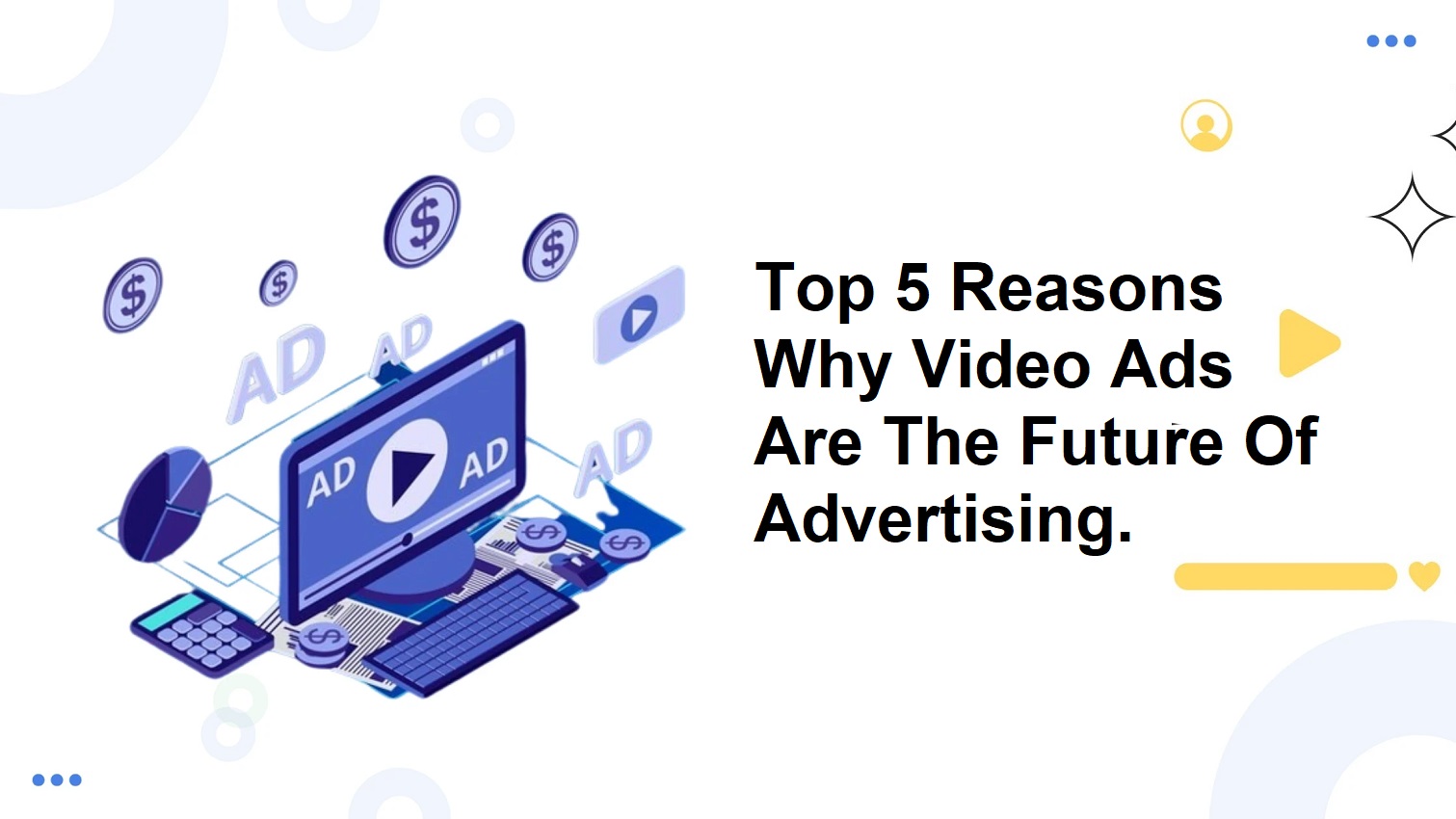Top 5 Reasons Why Video Ads Are The Future Of Advertising.
In the ever-evolving landscape of advertising, video ads have emerged as a powerhouse, reshaping how brands connect with audiences. This guide explores the top five reasons why video ads are the future of advertising, delving into the impact of visual storytelling, audience engagement, data-driven strategies, and the undeniable growth trajectory of video content.
I. Introduction
A. Evolution of Advertising
Definition: Advertising has transitioned from traditional print and radio formats to dynamic digital platforms. Video ads, in particular, have become a focal point, harnessing the power of visuals and storytelling.
B. Significance of Video Ads
- Visual Appeal: Video ads combine visuals, audio, and narrative to create a compelling and immersive experience.
- Digital Dominance: With the rise of digital platforms, video ads have become a cornerstone of online advertising.
- Engagement Catalyst: Video content captivates audiences, fostering higher engagement compared to static formats.
II. Reasons Video Ads Are the Future
A. 1. Visual Storytelling Impact
Overview: Video ads leverage visual storytelling to convey brand messages, evoke emotions, and create memorable experiences.
Impact:
- Emotional Connection: Storytelling fosters emotional connections, making brands more relatable.
- Brand Recall: Memorable narratives enhance brand recall, ensuring a lasting impact.
- Consumer Trust: Transparent and authentic storytelling builds trust with audiences.
Example: A brand using a narrative-driven video ad to showcase its commitment to sustainability, taking viewers on a journey through its eco-friendly practices.
B. 2. Increased Audience Engagement
Overview: Video ads drive higher engagement levels compared to static content, capturing and retaining viewer attention effectively.
Engagement Metrics:
- View Duration: Videos encourage longer interaction periods, increasing exposure.
- Social Shares: Compelling video content is more likely to be shared, amplifying reach.
- Interactive Elements: Features like clickable links and calls-to-action enhance engagement.
Example: An interactive video ad allowing viewers to click on products showcased for direct purchase or additional information.
C. 3. Data-Driven Personalization
Overview: Data analytics enable personalized video content tailored to individual viewer preferences, behaviors, and demographics.
Strategies:
- User Segmentation: Analyzing data to create targeted content for specific audience segments.
- Dynamic Content: Tailoring video elements dynamically based on viewer data.
- Localization: Adapting content for different regions and cultural nuances.
Example: An e-commerce platform sending personalized video recommendations to users based on their browsing and purchase history.
D. 4. Proliferation of Video Platforms
Overview: The surge in video platforms, both mainstream and niche, provides diverse avenues for video ad distribution.
Platform Diversity:
- Social Media: Platforms like Facebook, Instagram, and TikTok prioritize video content.
- Streaming Services: Video streaming platforms, including YouTube and OTT services, offer extensive reach.
- In-App Advertising: Apps integrating video ads for monetization opportunities.
Example: A brand leveraging a mix of YouTube, Instagram, and TikTok to reach a diverse audience across different demographics and interests.
E. 5. Mobile Dominance
Overview: The ubiquity of smartphones has positioned mobile devices as primary platforms for consuming video content, making mobile-friendly video ads essential.
Mobile Trends:
- Vertical Video: Vertical formats optimize viewing on mobile screens.
- In-App Integration: Video ads seamlessly integrated within mobile apps for a streamlined user experience.
- Short-Form Content: Mobile-friendly short-form videos align with on-the-go consumer preferences.
Example: A mobile-first strategy incorporating vertical video ads that provide an immersive experience for users engaging with content on their smartphones.
III. Implementing Video Ads Effectively
A. Crafting Compelling Video Content
- Storyboarding: Develop a captivating narrative with a clear beginning, middle, and end.
- Visual Appeal: Invest in high-quality visuals, ensuring clarity and professionalism.
- Call-to-Action (CTA): Include a clear and compelling CTA to guide viewers toward desired actions.
B. Targeted Distribution Strategies
- Audience Segmentation: Use data analytics to segment your audience and tailor content for specific groups.
- Platform Optimization: Customize videos for each platform’s specifications and audience demographics.
- Social Media Amplification: Leverage social media for organic sharing and engagement, maximizing reach.
C. Incorporating Interactive Elements
- Clickable Links: Integrate links that allow viewers to explore products, services, or additional content.
- Polls and Surveys: Foster engagement by incorporating interactive elements like polls and surveys.
- User-Generated Content: Encourage users to participate by creating and sharing their content related to your brand.
IV. Overcoming Challenges
A. Budget Constraints
- Prioritization: Allocate budget strategically, focusing on platforms and strategies that align with your goals.
- Creative Optimization: Emphasize creativity over budget size; compelling content often trumps high production costs.
B. Adapting to Platform Changes
- Agility: Stay informed about changes in algorithms and features on platforms, adapting strategies accordingly.
- Diversification: Diversify your advertising efforts across platforms to minimize risks associated with changes on a single platform.
V. The Ethical Landscape
A. Transparency and Trust
- Clear Disclosures: Disclose sponsored content transparently, building trust with your audience.
- Data Privacy: Prioritize data privacy, adhering to regulations and communicating policies clearly.
VI. Future Trends in Video Advertising
A. Emerging Technologies
- Augmented Reality (AR) Integration: Explore AR features for interactive and immersive ad experiences.
- Artificial Intelligence (AI) Enhancement: Anticipate AI-driven innovations in ad personalization and targeting.
B. Interactive and Shoppable Videos
- Direct E-commerce Integration: Experiment with shoppable videos, allowing users to make purchases directly from the ad.
- Interactive Storytelling: Develop interactive narratives that engage viewers and encourage participation.
VII. Conclusion
As the advertising landscape evolves, video ads stand out as a dynamic and indispensable tool for brands seeking to connect with audiences authentically. The reasons behind their prominence—from visual storytelling impact to data-driven personalization—underscore their transformative role in the future of advertising. By crafting compelling content, leveraging targeted distribution strategies, and adapting to emerging trends, brands can harness the full potential of video ads to build brand awareness, foster engagement, and drive business success in the digital era.


